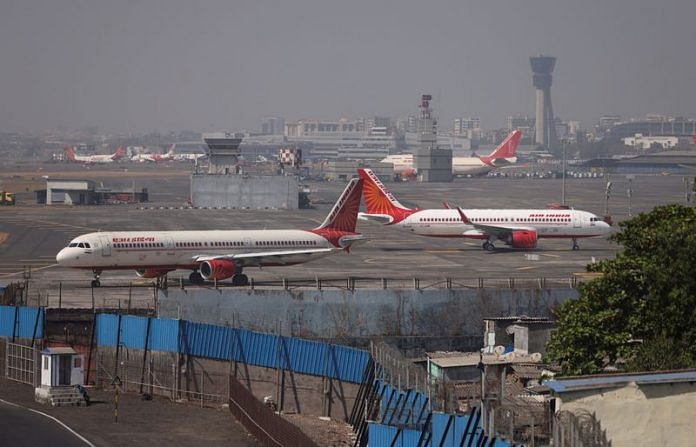New Delhi: Tensions over plans to transform Air India into a global airline with hundreds of new jets rippled across the aviation sector on Tuesday as foreign carriers clamoured for more access to the world’s fastest-growing economy.
Prime Minister Narendra Modi’s government faces growing demands to ease a near-freeze on capacity that can be deployed on many routes to and from India, now that India‘s flag carrier has been sold to the cash-rich Tata conglomerate.
Current limits on the amount of flying allowed between India and many markets date back to heavy losses at Air India around the beginning of the last decade, analysts said.
But a huge overhaul of the airline, including the world’s largest ever plane order for 470 jets, rekindled a debate over market access at a New Delhi aviation conference on Tuesday.
Dubai’s Emirates, Turkish Airlines and Kuwaiti carrier Jazeera Airways all called for sharp increases in traffic rights to and from India to meet demand. Vietnam and Indonesia also want more flights, an Indian official said.
“We are not getting enough share from this market,” Turkish Airlines Chief Executive Bilal Eksi told the CAPA India conference. Dubai has requested an extra 50,000 seats a week on India routes.
But in an exclusive interview, India‘s civil aviation minister told Reuters the government is not currently looking at easing curbs. He urged Indian airlines to order more big jets to meet demand without forcing passengers to change planes.
“I think it’s about time that our carriers looked at the international market with greater focus. That’s what we are pushing the airlines to do and that process has already started,” Jyotiraditya Scindia said.
Currently most Indians use foreign carriers for long trips, often changing at Gulf hubs, with relatively few long-range jets based in the country despite a population of 1.3 billion.
‘Bigger share’
Now, the rebirth of Air India and launch of a new Saudi carrier with dozens of jet orders has shuffled the deck and left Dubai’s massive international hub flanked by new rivals.
But Emirates President Tim Clark welcomed the launches and said there was enough room for everyone without traffic curbs.
“There’s so much (demand) there that none of us will be able to deal with it, if we allow unconstrained growth,” he said.
Analysts said India‘s government is in no hurry to relax the curbs as it seeks to recapture traffic lost to foreign carriers – part of a wider initiative to create an economic powerhouse.
“There is clear evidence that the government wants a mega-carrier of size, scale and quality to emerge over the years,” said Kapil Kaul, head of the CAPA India consultancy, adding the refusal to allow more flights for now appeared to be tactical.
“I don’t think they’re even encouraging the discussion … the position whether other airlines like it or not, is ‘we want to build a bigger brand and we want to have a bigger share’.”
In one exception, India has granted more flights to Russia, Civil Aviation Secretary Rajiv Bansal said.
Other analysts noted India is not alone in making use of a post-war system of air traffic agreements to aid development.
“It is not about the airlines; the government is saying it’s about India as a country: ‘we want non-stop flights’,” said Ameya Joshi, founder of air analysis website NetworkThoughts.
“Next year is an election year so it would not make sense for the government to take risks on traffic rights now. Anything that happens is likely to be after the elections.”
(Reporting by Tim Hepher, Aditi Shah and Tanvi Mehta in New Delhi; editing by Jonathan Oatis)
Disclaimer: This report is auto generated from the Reuters news service. ThePrint holds no responsibilty for its content.
Also read: India resists calls for more air access in drive to be global aviation force






